As a child, Josh Gray went to Disneyland and watched an animatronic Abraham Lincoln that inspired him to learn and work in robotics. He later earned a mechanical engineering degree and moved to Los Angeles to work with Hollywood geniuses like Stan Winston and Steven Spielberg.
Josh spent 80 hours a week at a studio that produced robots for films like Jurassic Park, Terminator, Predator, and Aliens II. 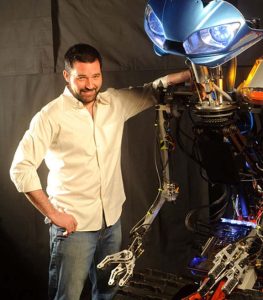 “As advanced as that shop was,” says Josh, “it only had one CNC lathe for making eyeballs. We never had any sort of CNC shape cutting device.” This forced them to outsource parts and waste valuable time, especially when parts were cut incorrectly.
“As advanced as that shop was,” says Josh, “it only had one CNC lathe for making eyeballs. We never had any sort of CNC shape cutting device.” This forced them to outsource parts and waste valuable time, especially when parts were cut incorrectly.
Josh eventually started his own animatronics and robotics company, Custom Entertainment Solutions, in Salt Lake City. When he won a contract for an 8-foot-tall, 700-pound educational robot, he knew that he needed a CNC plasma cutting machine to build its steel base. “I didn’t have time to wait, and I definitely needed the ability to change part designs fast.”
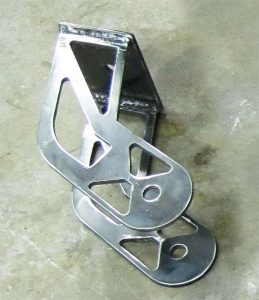 Josh saw someone making cool outdoor brackets with amazing speed on a PlasmaCAM machine, and he was impressed enough to buy one. “Sure enough, it was perfect,” he says. “When you dial it in, it’s like holy cow, that’s really good.” Josh believes he wouldn’t have been able to construct the robot without it. He even uses the machine to make precise replacement parts for lathe modifications. “It’s machines helping machines,” he says.
Josh saw someone making cool outdoor brackets with amazing speed on a PlasmaCAM machine, and he was impressed enough to buy one. “Sure enough, it was perfect,” he says. “When you dial it in, it’s like holy cow, that’s really good.” Josh believes he wouldn’t have been able to construct the robot without it. He even uses the machine to make precise replacement parts for lathe modifications. “It’s machines helping machines,” he says.
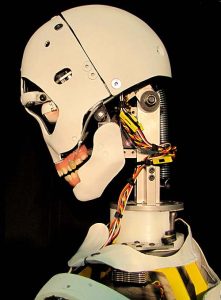 Josh takes on challenging tasks with his “What can I make for you?” business model. The requests can get a little strange, like when Josh was asked to replicate a deceased man using photos, media samples, and measurements to complete the task. The finished android will function as a railroad conductor in an Oklahoma museum. Ironically, the museum also asked Josh to build an animatronic Abraham Lincoln, the very thing that inspired Josh in the first place. “PlasmaCAM came into play on that thing,” says Josh. “The machine paid for itself many times.”
Josh takes on challenging tasks with his “What can I make for you?” business model. The requests can get a little strange, like when Josh was asked to replicate a deceased man using photos, media samples, and measurements to complete the task. The finished android will function as a railroad conductor in an Oklahoma museum. Ironically, the museum also asked Josh to build an animatronic Abraham Lincoln, the very thing that inspired Josh in the first place. “PlasmaCAM came into play on that thing,” says Josh. “The machine paid for itself many times.”
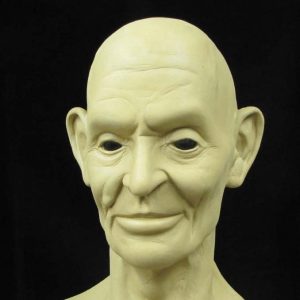 Josh’s clients include world-class technical schools like the Royal Institute of Technology in Stockholm and Technion Institute in Israel. Technion recently purchased what Josh calls ToMoMi, an animatronic head that its graduate students can use to study human interactions with a robot face. “This was a huge leap in human/machine interface,” says Josh. “Because there are roughly 52 muscles in the human face,” he explains, “you must try to create absolute realism. If you miss even a small, subtle part of that motion, it becomes terrifying, not entertaining.” ToMoMi is available for anyone to buy and use.
Josh’s clients include world-class technical schools like the Royal Institute of Technology in Stockholm and Technion Institute in Israel. Technion recently purchased what Josh calls ToMoMi, an animatronic head that its graduate students can use to study human interactions with a robot face. “This was a huge leap in human/machine interface,” says Josh. “Because there are roughly 52 muscles in the human face,” he explains, “you must try to create absolute realism. If you miss even a small, subtle part of that motion, it becomes terrifying, not entertaining.” ToMoMi is available for anyone to buy and use.
Josh says that his relatively small business can produce things at incredible speed with the help of the PlasmaCAM system. “It’s awesome how automated the DesignEdge software is,” he explains. “It patches the holes and does exactly what it says it’s going to do. That’s how we’re able to change gears so fast when we have to.” According to Josh, design possibilities that would have been scrapped are now feasible projects.
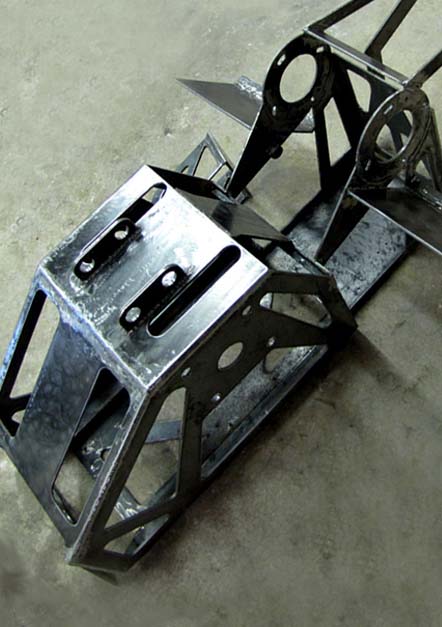
Above: Steel skeleton for base of an eight-foot-tall, 700-pound educational robot.